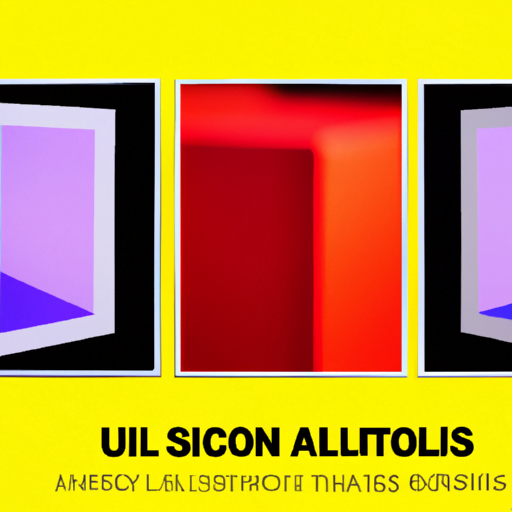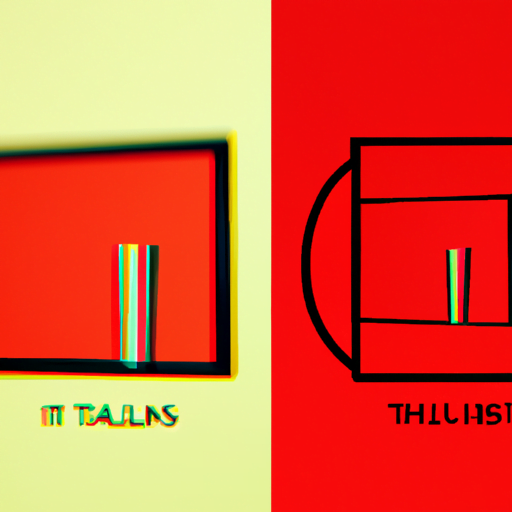
-
Table of Contents
- The Use of Optical Illusions in Mind-Bending Artworks
- The History of Optical Illusions in Art
- Techniques Used in Optical Illusions
- 1. Trompe-l’oeil
- 2. Op Art
- 3. Anamorphosis
- The Impact of Optical Illusions on Viewers
- 1. Engagement and Interaction
- 2. Cognitive Stimulation
- 3. Emotional Response
- Conclusion
The Use of Optical Illusions in Mind-Bending Artworks

Art has always been a medium for expressing creativity and evoking emotions. Over the years, artists have experimented with various techniques to captivate their audience. One such technique that has gained significant popularity is the use of optical illusions in mind-bending artworks. These artworks play with our perception, challenging our understanding of reality and leaving us in awe. In this article, we will explore the fascinating world of optical illusions in art, their history, techniques, and the impact they have on viewers.
The History of Optical Illusions in Art
Optical illusions have been used in art for centuries, dating back to ancient civilizations. The Greeks, for example, were known to incorporate optical illusions in their murals and mosaics. However, it was during the Renaissance period that artists truly began to explore the potential of optical illusions.
One of the most famous examples of optical illusions in art is Leonardo da Vinci’s “Mona Lisa.” The painting’s enigmatic smile and the illusion of her eyes following the viewer have fascinated art enthusiasts for centuries. Da Vinci’s mastery of perspective and his understanding of how the human eye perceives depth allowed him to create this mesmerizing effect.
Techniques Used in Optical Illusions
Artists employ various techniques to create mind-bending optical illusions. These techniques manipulate our visual perception, making us question what we see. Let’s explore some of the most commonly used techniques:
1. Trompe-l’oeil
Trompe-l’oeil, meaning “deceive the eye” in French, is a technique that creates an illusion of three-dimensionality on a two-dimensional surface. Artists use meticulous attention to detail and realistic rendering to make objects appear as if they are popping out of the canvas. This technique tricks the viewer into believing that they are looking at a real object rather than a painting.
An excellent example of trompe-l’oeil is the work of Dutch artist Samuel van Hoogstraten. In his painting “The Perspective Box,” he creates an illusion of a three-dimensional space within a two-dimensional painting. The viewer feels as if they can reach into the painting and touch the objects, blurring the line between reality and art.
2. Op Art
Op Art, short for Optical Art, emerged in the 1960s and became a significant movement in the art world. Op artists use geometric patterns, lines, and colors to create visual effects that confuse the eye. These artworks often appear to be moving or vibrating, creating a sense of disorientation.
Victor Vasarely, a Hungarian-French artist, is considered the father of Op Art. His artwork “Zebra” is a prime example of this style. The black and white stripes create an illusion of movement, making the viewer question whether the lines are truly straight or if they are bending.
3. Anamorphosis
Anamorphosis is a technique that distorts an image in such a way that it can only be viewed correctly from a specific angle or with the help of a reflective surface. This technique has been used in various art forms, including paintings, sculptures, and street art.
One of the most famous examples of anamorphosis is Hans Holbein the Younger’s “The Ambassadors.” In this painting, a distorted skull can only be seen clearly when viewed from a specific angle. This hidden element adds an element of surprise and intrigue to the artwork.
The Impact of Optical Illusions on Viewers
Optical illusions in art have a profound impact on viewers. They challenge our perception and force us to question our understanding of reality. Here are some ways in which optical illusions impact viewers:
1. Engagement and Interaction
Artworks that incorporate optical illusions actively engage viewers. The mind-bending effects capture our attention and encourage us to interact with the artwork. We find ourselves moving around, trying to decipher the illusion and understand how it works. This active participation creates a deeper connection between the viewer and the artwork.
2. Cognitive Stimulation
Optical illusions stimulate our cognitive processes, making us think and analyze what we see. Our brains try to make sense of the conflicting information, leading to increased mental activity. This cognitive stimulation can be both entertaining and intellectually rewarding.
3. Emotional Response
Optical illusions often evoke strong emotional responses from viewers. The sense of wonder, surprise, and sometimes even confusion can elicit a range of emotions. These emotional reactions make the viewing experience more memorable and impactful.
Conclusion
Optical illusions in mind-bending artworks have a long and fascinating history. From the ancient Greeks to the Renaissance masters and modern-day artists, optical illusions continue to captivate and intrigue viewers. Through techniques like trompe-l’oeil, Op Art, and anamorphosis, artists challenge our perception and create mesmerizing effects. The impact of optical illusions on viewers is undeniable, engaging them, stimulating their cognitive processes, and evoking emotional responses. As we continue to explore the boundaries of art, optical illusions will undoubtedly play a significant role in pushing the limits of our perception.
